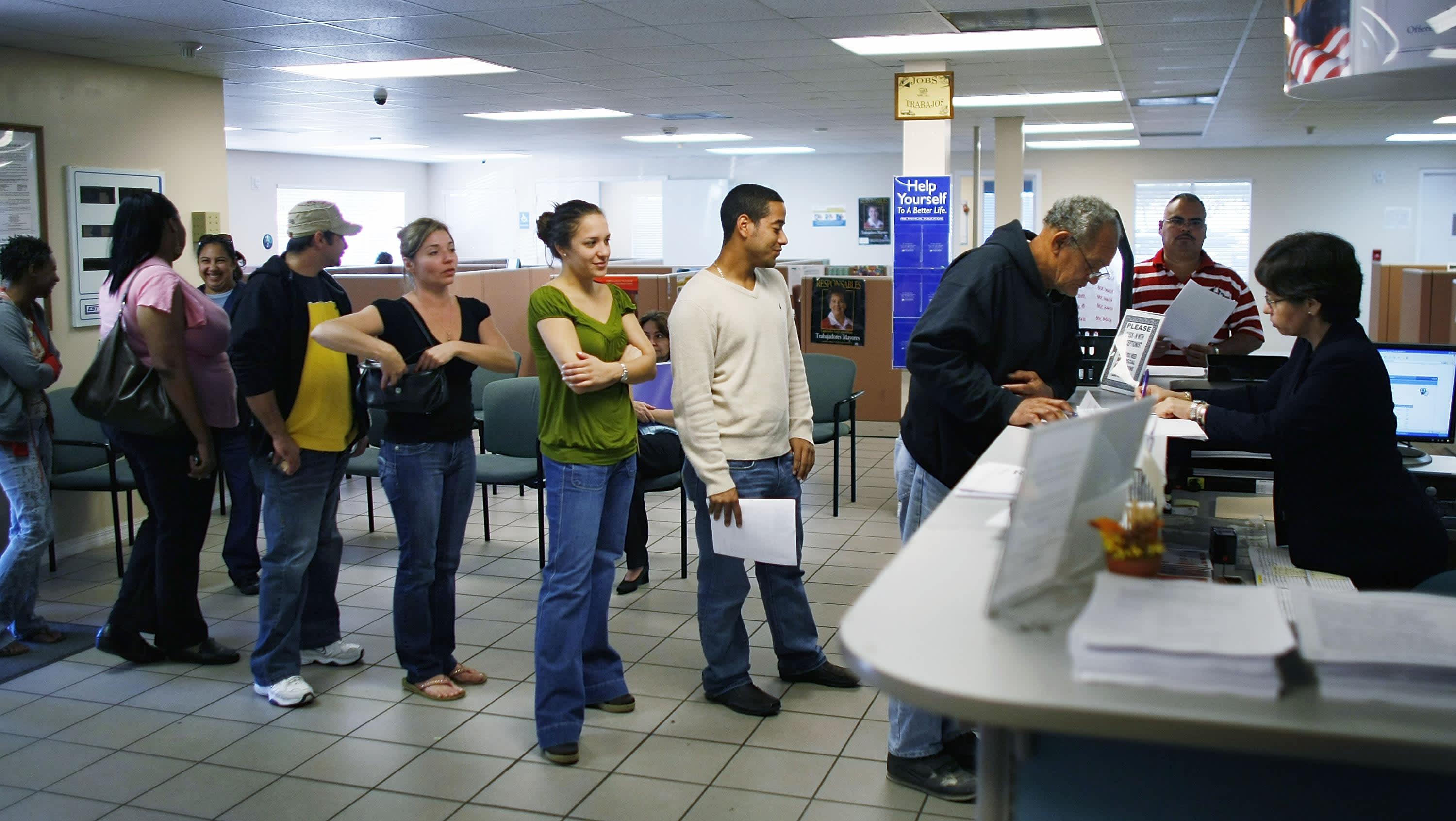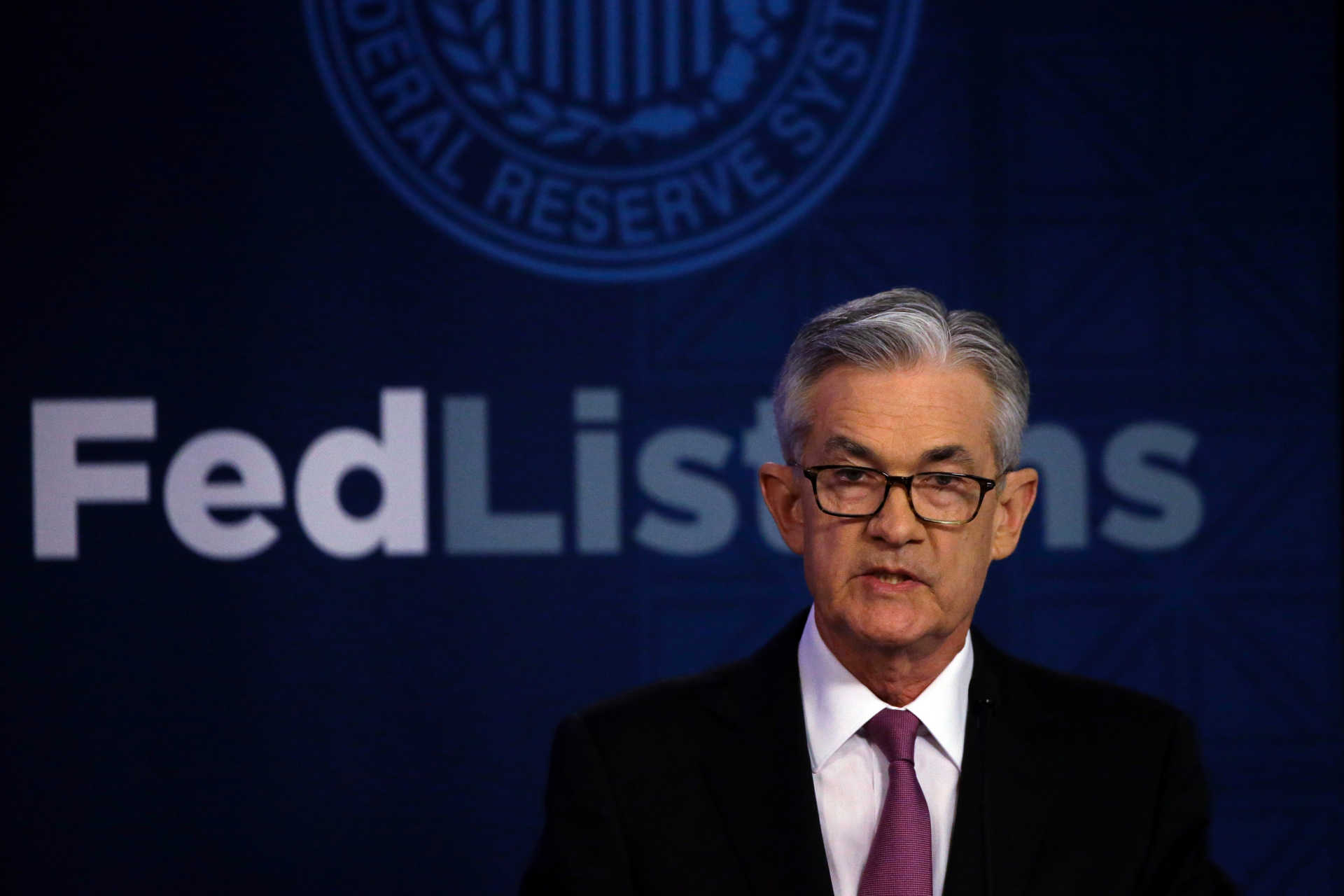
Job creation skidded to a near-halt in May in another sign that the U.S. economic momentum is slowing.
Companies added just 27,000 new positions during the month, according to a report Wednesday from payroll processing firm ADP and Moody's Analytics that was well below Dow Jones estimates of 173,000.
The reading was the worst since around the time the economic expansion began and the jobs market bottomed in March 2010 with a loss of 113,000. Since then, the private payrolls count has increased by 21.3 million.
"Job growth is moderating," Mark Zandi, chief economist at Moody's Analytics, said in a statement. "Labor shortages are impeding job growth, particularly at small companies, and layoffs at brick-and-mortar retailers are hurting."
Indeed, the most damage came at companies with fewer than 50 employees, which reported a loss of 52,000 jobs, and in the goods-producing sector, which saw a decline of 43,000. Almost all of the small business loss (50,000) came at firms with fewer than 20 employees, while the big loser in the goods sector was construction, where 36,000 positions were lost.
Large companies withstood the slowdown, adding 68,000 jobs, while those with 50 to 499 employees contributed 11,000.
The anemic May growth comes after a powerful surge in April of 271,000, the highest since July though revised down 4,000 from the initial reading. Private job creation in the ADP/Moody's count has averaged 188,000 a month in 2019.
"Following an overly strong April, May marked the smallest gain since the expansion began," Ahu Yildirmaz, vice president and co-head of the ADP Research Institute, said in a statement. "Large companies continue to remain strong as they are better equipped to compete for labor in a tight labor market."
The disappointing report comes two days before the more closely watched official government reading on nonfarm payrolls. Economists surveyed by Dow Jones expect the Labor Department to report growth of 180,000, down from April's 263,000, and the unemployment report to hold at a 50-year low of 3.6%. The ADP report occasionally can cause economists to revise their expectations for nonfarm payrolls, though the two numbers can differ widely.
Zandi later told CNBC that the May ADP number probably "overstates the case" for a weakening economy and estimated that the nonfarm payrolls report probably would come in around 150,000 based on the average of the past two months' private payrolls numbers.
At a sector level, all the gains came on the services side, which added 71,000 positions. Health care and social assistance grew by 34,000, followed by professional and business services (22,000), and leisure and hospitality (16,000). The "other services" category saw a drop of 9,000, while information lost 3,000 and education decreased by 1,000.
All of the major goods producing categories reported losses, with natural resources and mining down 4,000 and manufacturing off by 3,000. Franchise jobs also fell by 4,800.
The news comes at a sensitive time for the economy.
After a solid 2018 that saw GDP up 2.9% and an unusually strong first-quarter growth rate of 3.1%, economists now expect a slowdown through at least the next two quarters. CNBC's Rapid Update survey forecasts gains of just 1.7% in the second quarter.
Financial markets have slowed considerably after a record-setting pace to start the year. Even with Tuesday's powerful rally, the Dow Jones Industrial Average has fallen 4.4% in the past month.
Markets are betting that the Federal Reserve steps in with at least two and possibly three rate cuts this year. In a speech Tuesday, Fed Chairman Jerome Powell said the central bank is prepared to "act as appropriate" to keep the expansion going, which markets took as an encouraging sign that policy easing could be on the way.
https://www.cnbc.com/2019/06/05/job-growth-screeches-to-near-halt-in-mayprivate-payrolls-up-just-27k.html
2019-06-05 12:30:01Z
52780309476562




